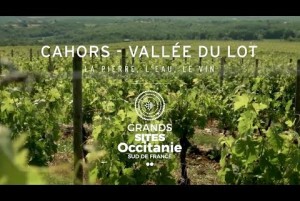Cahors in the middle ages
After the turbulent times of the early Middle Ages, the name "Cahors" reappears in the seventh century when a powerful bishop named St Didier restored the town and built protective walls.
Five centuries later, the city experienced a golden age that would last two centuries, this was the period of the "Caorsins". From the middle of the twelfth to the middle of the fourteenth century a handful of wealthy families whose wealth was based on lending, trained by their colleagues in Lombardy, settled in Quercy, bringing much income in interests on trading loans to the area from the four corners of Europe, The city of Cahors was completely rebuilt with this new wealth.
As an economic centre, the city benefited from the proximity of the river Lot which was used for the transportation of goods, including the famous vin noir (black wine), appreciated as far away as England. The city also experienced significant religious activity around its cathedral, its ten parish churches and congregations.
In 1316, the Cadurcien, Jacques Duèze, become pope under the name of John XXII. He founded the university and promoted religion and commerce in order to attract the elites of the Avignon court.
In the 13th century the power of the count-bishops became ever increasingly challenged by the consuls, who received final recognition of their customs in 1351.
The Hundred Years War (1337-1453) put an end to this period of prosperity.
The city has retained a rich medieval heritage: a domed cathedral, a Gothic cloister, hundreds of medieval houses of all kinds, not to mention the iconic Valentré Bridge.

